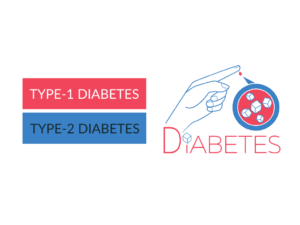The Difference Between Glucose and Fructose
Have you ever wondered about the difference between glucose and fructose? These two sugars are commonly found in various foods and beverages, but they have distinct characteristics and effects on our bodies. In this article, we will explore what glucose and fructose are, provide examples of each, discuss their uses, and highlight the key differences between them.
What is Glucose?
Glucose is a simple sugar, also known as a monosaccharide, that serves as the primary source of energy for our bodies. It is commonly found in fruits, vegetables, and honey. Glucose is also produced during the breakdown of complex carbohydrates such as starches.
Examples of Glucose
Some common examples of foods and substances containing glucose include:
- Fruits like grapes and bananas
- Vegetables such as corn and potatoes
- Energy drinks
- Bread and pasta
- Sweets like candy and chocolate
Uses of Glucose
Glucose has various uses in the body, including:
- Providing energy for cell function
- Supporting brain activity
- Maintaining proper blood sugar levels
- Facilitating the synthesis of other molecules, such as proteins and lipids
What is Fructose?
Fructose is also a monosaccharide and a natural sugar found in fruits, vegetables, and honey. It has a sweet taste, often sweeter than glucose, and is commonly used as a sweetener in processed foods and beverages.
Examples of Fructose
Here are some examples of foods and substances that contain fructose:
- Fruits such as apples and oranges
- Soft drinks and sodas
- Table sugar
- High fructose corn syrup (commonly found in processed foods)
- Fruit juices
Uses of Fructose
Fructose serves various purposes, including:
- Sweetening foods and beverages
- Providing energy
- Enhancing the flavor of processed foods
- Acting as a preservative in certain products
- Playing a role in the formation of glycogen (stored glucose) in the liver
Differences Between Glucose and Fructose
| Difference Area | Glucose | Fructose |
|---|---|---|
| Chemical Structure | Glucose has a six-carbon ring structure. | Fructose has a five-carbon ring structure. |
| Taste | Glucose is less sweet compared to fructose. | Fructose is sweeter than glucose. |
| Natural Occurrence | Glucose is naturally present in various foods and produced during digestion. | Fructose is primarily found in fruits, vegetables, and honey. |
| Sweetener Use | Glucose is not commonly used as a sweetener in processed foods and beverages. | Fructose is commonly used as a sweetener, including in high fructose corn syrup. |
| Metabolism | Glucose is easily metabolized by most cells in the body. | Fructose is primarily metabolized in the liver. |
| Effect on Blood Sugar | Glucose has a significant impact on blood sugar levels and insulin release. | Fructose has a less immediate effect on blood sugar levels but can contribute to insulin resistance in high quantities. |
| Energy Production | Glucose is readily used by the body for energy production. | Fructose requires conversion to glucose or other forms to be utilized for energy. |
| Digestive Absorption | Glucose is easily absorbed in the small intestine. | Fructose requires facilitated transport for absorption in the small intestine. |
| Metabolic Disorders | Glucose is not directly associated with metabolic disorders when consumed in moderation. | Fructose consumption has been linked to metabolic disorders such as obesity, fatty liver disease, and insulin resistance. |
| Conversion to Fat | Excess glucose can be converted into fat in the body if not utilized for energy. | Fructose has a higher tendency to be converted into fat in the liver, potentially leading to fatty liver disease. |
Conclusion
In summary, glucose and fructose are both sugars that provide energy, but they have distinct properties and effects on the body. Glucose is less sweet, widely distributed in various foods, and plays a crucial role as an energy source for cells. On the other hand, fructose is sweeter, primarily found in fruits and honey, and can have negative health effects when consumed in excessive amounts. Understanding their differences can help us make informed choices when it comes to our diet and overall well-being.
People Also Ask
- Q: How are glucose and fructose absorbed in the body?
- Q: Can glucose and fructose be found together in foods?
- Q: Are glucose and fructose artificial sweeteners?
- Q: Are glucose and fructose suitable for people with diabetes?
- Q: Are glucose and fructose linked to weight gain?
Glucose is directly absorbed in the small intestine through specific transporters, while fructose requires facilitated transport for absorption.
Yes, many fruits contain both glucose and fructose, although their proportions may differ. For example, apples contain approximately equal amounts of glucose and fructose.
No, glucose and fructose are natural sugars. However, fructose is commonly used as a sweetener in processed foods and beverages.
People with diabetes need to manage their blood sugar levels carefully, and glucose can have a more immediate impact than fructose. However, individualized dietary recommendations from healthcare professionals are essential.
While excessive consumption of any sugar can contribute to weight gain and metabolic disorders, fructose has been more strongly associated with these negative health effects.


